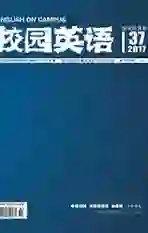Transliteration in Translation of Advertising English
2017-12-21尹婧
尹婧
As a practical style, Advertising English gradually derives from the English language due to its practical social role. In this respect, the paper will generalize the fundamental knowledge of advertisement including its definition, roles and functions in our daily life. Built on the fundamental knowledge of advertisement, this paper attempts to tackle translation of Adverting English. Admittedly, this theme has attracted increasing attention, but the actual translation theory and practice, still as yet under- explored, is an area that calls for more research. Transliteration is one of the translation tactics of advertising English. I will go into it in the following paper.
A completely written advertisement is composed of five parts:headline, body text, slogan, trademark and illustration, and the first three of them are verbal while the other two are non-verbal parts. Among them, when it comes to transliteration, it is mostly applied on trademark translation.
“Names of objects as proper names consist of trademarks, brands or proprietary. They are normally transliterated, often coupled with a classifier if the name is not likely to be known to the target language readership.” (qtd in Newmark, 2001:215). In advertising translation, we often meet trademarks unfamiliar to Chinese consumers. Based on equivalence effect in sound, the adoption of a transliteration method may preserve efficiently the rhythmic beauty of the original trademark name. Each Chinese character stands for an idea that has no relationship to its sound. To meet the purpose of advertisement, that is to arouse the Chinese consumers interest, the translator should keep in mind the meaning the company would like to convey in the translation of its trademark and the appropriate characters which convey that meaning. But it is highly likely that the best translation will not sound exactly like the English name. In transliteration, the aim is to choose characters that sound closest to the original trademark name without producing a nonsensical or adverse meaning when strung together as a written phrase. In this way, it is easy to reinforce the Chinese consumers memory of the advertisement. Moreover, the translated version should be easy and short to remember, linking the product property to the Chinese consumers acceptance to arouse their imagination. The translation of the following two shampoo advertisements are good examples:
Pantene—潘婷
Safeguard—舒膚佳
Those are trademarks of P&G products, belonging to an international company with more than 166 years. Pantene, a trademark for shampoo is transliterated into 潘婷, which, simple and clear, sounds like a beautiful girls name. When seeing the advertisement, Chinese consumers have in their imagination a pretty girl with beautiful hair hanging about the shoulder, saying proudly:“Health makes it shiny”. Safeguard is advertisement for soap. The Chinese version舒肤佳indicates that this kind of soap boasts of being comfortable and high quality and the character佳can be regarded as家for interpretation with the meaning:Using Safeguard can bring the whole family healthy. In addition, the application of transliteration can also be recognized in the following examples:
Benz—奔驰 (automobile)
Audi—奥迪 (automobile)
OMO—奥妙 ( washing powder)
Canon—佳能 (Home Appliance)
From the examples above, it might be seen that the whole transference process involves all-around considerations of English and Chinese Cultural factors. While translating, translators should generally choose words with the meaning of good omen from many equivalent words in phonology. Chinese people always bear in mind happiness, safety, and coziness, which require the translated version to have cultural incentive besides literal equivalence. Therefore, sound, meaning and feeling should be in good harmony in translation. Take the following restaurant name as example:
Goodshine—故鄉
This restaurant name appears in a Chinatown in Los Angeles. To the Americans, Goodshine means that life is full of golden sunshine, and dining there is happy and enjoyable. 故乡as the counterpart, not only has a similar pronunciation, but also arouses nostalgia among the overseas Chinese, that is, dining here is like dining at home. Hence, the restaurant receives scores of people every day. This way of translation, which is a combination of pronunciation and emotion, is a good example of transliteration.
